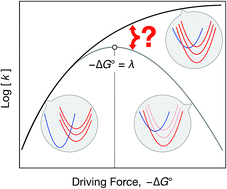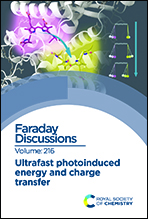Theoretical analysis of the inverted region in photoinduced proton-coupled electron transfer
Abstract
Photoinduced proton-coupled electron transfer (PCET) plays a key role in a wide range of energy conversion processes, and understanding how to design systems to control the PCET rate constant is a significant challenge. Herein a theoretical formulation of PCET is utilized to identify the conditions under which photoinduced PCET may exhibit inverted region behavior. In the inverted region, the rate constant decreases as the driving force increases even though the reaction becomes more thermodynamically favorable. Photoinduced PCET will exhibit inverted region behavior when the following criteria are satisfied: (1) the overlap integrals corresponding to the ground reactant and the excited product proton vibrational wavefunctions become negligible for a low enough product vibronic state and (2) the reaction free energies associated with the lower excited product proton vibrational wavefunctions contributing significantly to the rate constant are negative with magnitudes greater than the reorganization energy. These criteria are typically not satisfied by harmonic or Morse potentials but are satisfied by more realistic asymmetric double well potentials because the proton vibrational states above the barrier correspond to more delocalized proton vibrational wavefunctions with nodal structures leading to destructive interference effects. Thus, this theoretical analysis predicts that inverted region behavior could be observed for systems with asymmetric double well potentials characteristic of hydrogen-bonded systems and that the hydrogen/deuterium kinetic isotope effect will approach unity and could even become inverse in this region due to the oscillatory nature of the highly excited vibrational wavefunctions. These insights may help guide the design of more effective energy conversion devices.

- This article is part of the themed collections: Celebrating our 2020 Prize and Award winners and Ultrafast photoinduced energy and charge transfer


 Please wait while we load your content...
Please wait while we load your content...